Using virtual and augmented reality in the classroom often helps educators overcome common, discipline-based restrictions. With various programs that provide truly unique, 360-degree views and content libraries designed to support deeper learning, the benefits of virtual reality in education include keeping all students engaged and increasing their social and emotional connections to curricular topics. And, as VR kits and access to quality content becomes more affordable, VR in schools is popular for good reason.
To the casual observer, VR is perhaps thought of as a trend that's gracing the gaming world and immersing players. In the same way, however, it’s become an educational tool that enables educators to immerse their students deeper into the classroom content. VR tools also provide children with a more immersive learning experience that can supplement the content teachers are presenting. This also helps to keep kids engaged for longer periods of time and generates interest in new topics. And, since it’s still something relatively new to most children, it can also excite them with experiences they otherwise may never have—like taking field trips to the desert or to outer space.
AR and VR in Education
AR and VR provide new angles for learning that, with proper integration, can enhance student experiences. They can also help to bring concepts to life with stunning visual displays. When the physical and the digital worlds intersect, children can gain vivid context that supports instruction. Augmented reality, in particular, allows educators to turn 2D devices into 3D devices. Students can see what is physically around them and educators can supplement that with more relevant digital content. Though this was originally developed for entertainment, mixed reality in education is also valuable.
Student motivation, engagement, and connection.
Both virtual and augmented reality can help teachers enhance their classroom instruction without discipline restrictions since there is such a wide variety of virtual education content on countless topics. With AR, for example, they can boost student motivation and engagement and improve their attitude on learning. When students are engaged from start to finish—something VR-based learning can boost—they tend to perform better. Plus, from an SEL perspective, virtual reality can help make learning more meaningful for students while motivating them in new ways.
Various benefits of virtual reality.
Education leaders have embraced VR and AR, in part, because they help students recognize the meaning in things they are learning. It also helps motivate students and engages them more directly. When students have genuine interest, persist through challenges, and get excited for their accomplishments, engagement levels peak. VR could help in all of these areas by inspiring, motivating, and offering new insights—whether that’s through field trips, activities, or experiments. Kids could also play team games in virtual reality—with the right tools—as teachers stretch its instructional benefits.
Deepening Learning with Virtual Reality Tools
The interactive elements of AR and VR provide useful, real-time feedback for educators and helpful visuals for students. As we said, student engagement is not always high and some instructors have tried virtual or augmented reality for a cure. AR and VR are certainly still evolving, but they're effective enough to have a legitimate place in the modern classroom. To be an ideal classroom technology, children should be able to create with it—not just consume it. That’s why teachers have found repeatable success with incorporating VR in instruction. Plus, there are now some very effective virtual reality education apps that enable more seamless integration in learning.
What makes classroom VR effective?
Classroom VR integration typically involves two options: systems that have libraries full of VR lessons for deeper immersion into curricular content or platforms that enable students to create experiences like this. Creating virtual content varies in degree of difficulty and it's usually more appropriate for high school and college students. The points of view VR systems provide mirror those of 360-degree cameras, which kids can't get from a textbook. With the RobotLAB VR Expeditions 2.0 system, for example, educators could transcend classroom limits and immerse students in any environment. The RobotLAB system also houses dozens of instructional Expeditions—covering everything from cities and states to ancient civilizations and science-based adventures, too.
The potential future of virtual reality in learning.
With more interactive lessons, VR content can activate prior knowledge on a topic. It also allows students to tap deeper into their creativity since they can often move around while they learn. Despite this ability to engage students across grade levels, VR adoption in education also needs teacher buy-in. We try to help teachers see how easily it integrates in the classroom to ease their natural apprehension. They’re worried that these crazes are trends but there’s reason to believe they could play a huge role in learning. It’s early, but AR and VR have the potential to disrupt education immensely and it’s honestly exciting to think about.
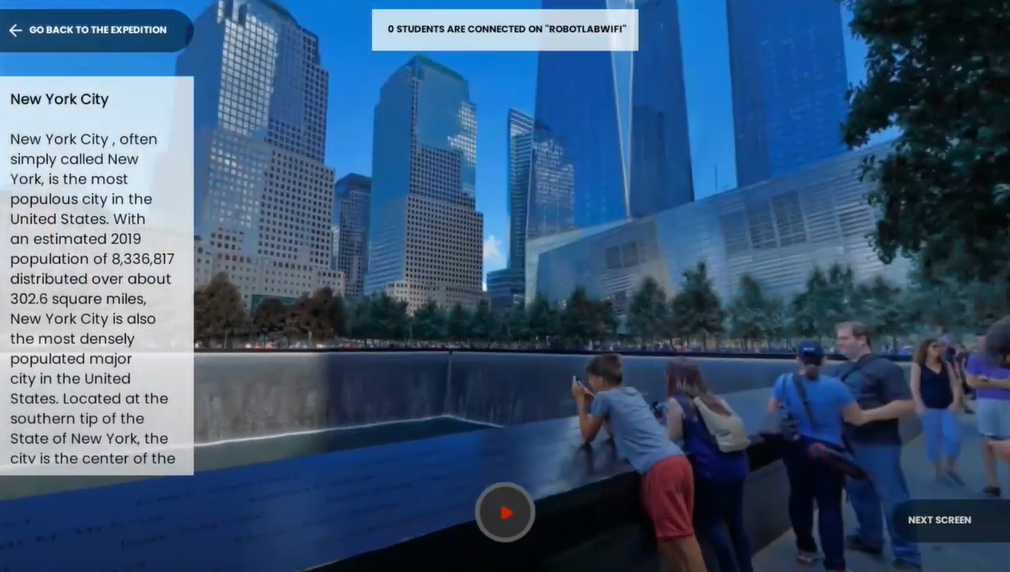
Virtual Reality vs. Traditional Learning Methods
In the present learning climate, educators might sometimes struggle with engaging and teaching the latest generation of students. Children today have different preferences, interests, and experiences than those in previous generations and want immediate satisfaction from content they are consuming. They also want to be engaged from start to finish, so creating a virtual reality classroom can help in expanding instructional possibilities. In fact, studies show that VR is more effective at engaging children from today’s generation. It keeps their attention longer than other pedagogical methods. Further, it can also positively affect learning performance, emotions, and engagement when compared to traditional instruction.
Student thoughts on virtual reality.
During the study, administrators recorded learning levels and emotional responses. Students who learned with help from VR had higher positive emotional responses to the content. They'd routinely state that they found the VR learning to be more engaging than 'basic' and 'boring' learning approaches. They also said that virtual reality made learning more exciting. We’d also be willing to bet that these students were more enthusiastic about going to school since they had more opportunities to try something new.
A unique complement to instruction.
VR offers children something different while helping them learn and understand the key concepts. It could also transform classroom teaching when implemented effectively and has become a popular alternative to traditional teaching styles. Not only does it help spark excitement, it helps to create some more enjoyable learning opportunities. It's great for drawing on student interests and allowing educators to reach them on a personal level. For all those reasons, VR might become more than a complement to textbooks and video learning over time. Since it’s also pretty affordable to use VR in education, it’s an appealing option in K-12 schools and colleges.
Some Arguments for Virtual Reality in the Classroom
Plenty of teachers and students believe VR deserves a place in today’s classrooms. Those opposed argue that it’s too expensive, too challenging to implement, and too distracting for students. The future of virtual reality is not going to be only gaming, however, and neither is its present. VR has educational benefits that start with generating excitement and end with advancing learning outcomes. Teachers are always looking to enhance engagement as well as the quality of their instruction. And, we argue that VR is one legitimate solution for turning ordinary classrooms into places of wonder, inquiry, and adventure.
It's more affordable than you might think.
While it may not be for every student, VR is more affordable than you would think. Some basic viewers are sometimes less than $100 while the most affordable top-end systems cost under $6,000. Their affordability and simplicity help minimize tech support issues during implementation but we also offer consulting should teachers need guidance. Once implemented, VR can help to pull kids in and generate interest in topics that they’ve previously rejected. One go-to example is that of the ancient Roman ruins. Most students learn this topic—usually by reading from their textbook—but, when they can actually see all the scenery using virtual reality, they tend to be much more energized and excited.
Virtual reality beyond STEM.
Virtual reality also has some more subtle benefits, like enhancing writing skills, since it helps to paint vivid pictures of a variety of topics, which helps stimulate student creativity, turning what they see into words on the paper. Additionally, VR encourages reading by replacing PowerPoint slides or lectures with much more intriguing information, often creating a greater willingness to read. Finally, VR can help allow for new cross-curricular opportunities like showing students images from a breathtaking scene and having them write a poem about it, bringing together both science and literature just like that. With the creative minds in today’s classrooms, that's just one example and only the beginning of using VR to teach.
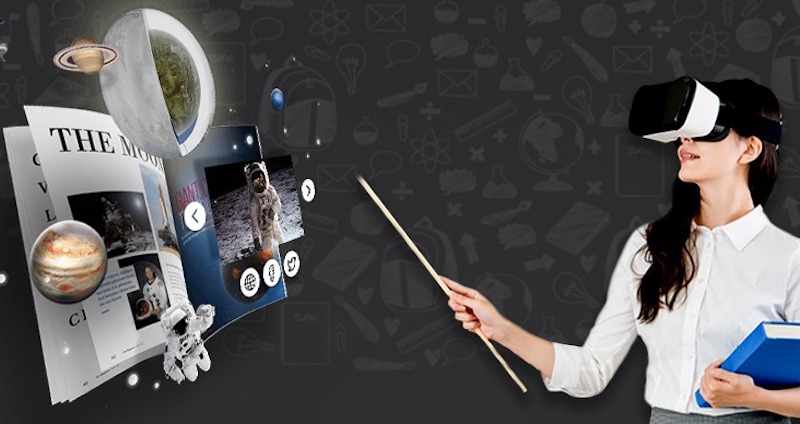
Improving the Quality of Education with AR and VR
Virtual and augmented reality are hot topics in education and the consumer world. Both of them have also become instructional avenues in the classroom and augmented reality lesson plans are just as effective as VR. This means that school leaders have had to boost their understandings of each one in many cases. As a reminder, AR involves adding digital elements to real video—usually viewed on a smartphone—while VR usage often involves a completely immersive experience that requires a headset to enter that digital world. Though they have their differences, both AR and VR could increase learning opportunities. They're also an exciting medium for students to consume content.
How VR helps all students learn.
Advocates for VR believe it improves both the quality of instruction and levels of engagement. This added engagement is the main argument for using it in education, though the social-emotional benefits of VR in education are also evolving. VR and AR can help students enjoy learning and see it as fun rather than just something they must finish. In addition, it could help reduce language barriers with vivid representations of classroom content. This can enhance learning experiences for children with physical disabilities by bringing the exciting elements of the world to them.
Virtual reality could be the future.
One of the final thoughts we’ll leave you with is on the real-life implications of learning with VR. Specifically in college, virtual reality can enable on-the-job training by immersing students directly in experiences. This helps them visualize career challenges while professionals like doctors, dentists, pilots, and engineers help train students for future employment. By the same token, any high school student can use VR to explore potential career paths before entering college. They could even potentially use it to decide on a major if VR helps them discover a previously unknown passion. Whether used for VR field trips or as a routine piece of the curriculum, virtual and augmented reality are playing a role in education and, as time goes on, we don’t think they're going anywhere.
Follow us on Twitter and Instagram for more or contact us for additional info on VR in the classroom.



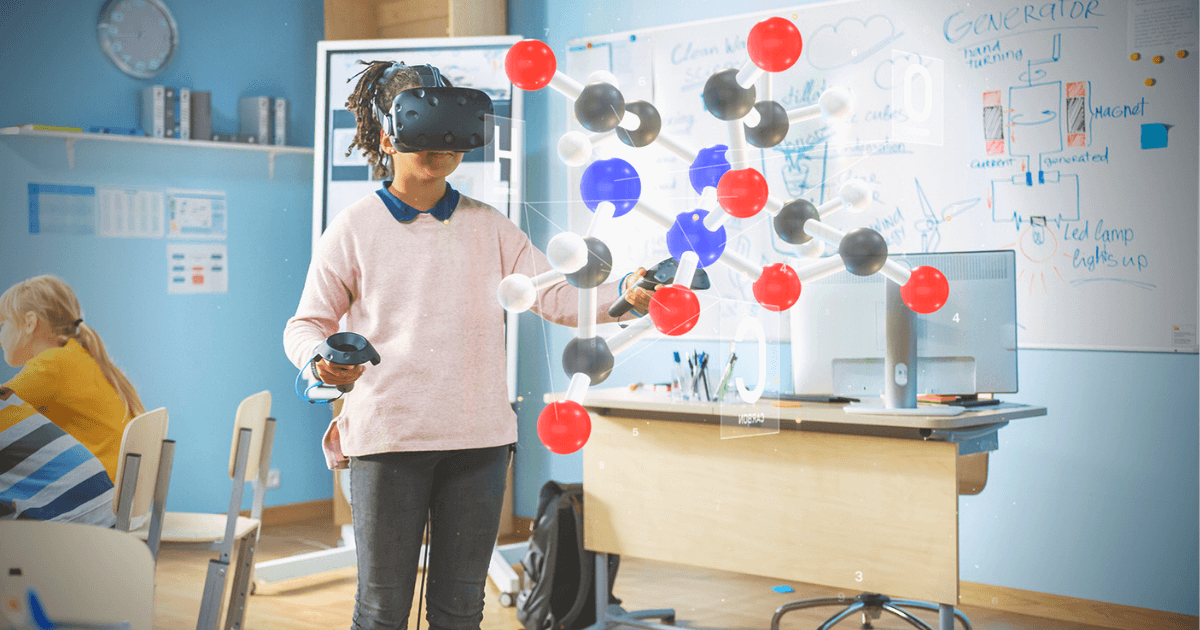
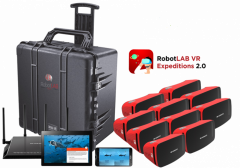

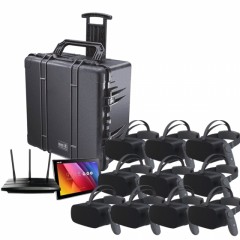
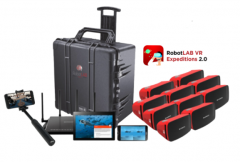
https://www.twinkl.com/resource/t-ar-9-ladybird-quick-look
https://www.twinkl.com/resource/t-ar-6-structure-of-the-earth-quick-look-no-file